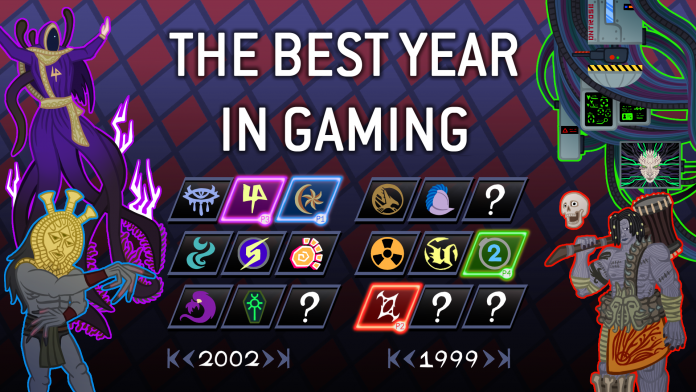Last year’s stacked lineup of games for the Game Awards had us thinking: What was the best year in gaming? As part of our series on determining gaming’s best year, we’re putting together an article on each year, charting the major releases and developments of the year, and talking about both their impact and what made them great.

The Year: 2006
2006 was a very busy year for games as the seventh generation of home consoles picked up steam. The Xbox 360 had released at the end of 2005 and 2006 was the first proper year of its lifetime, featuring a number of iconic games coming out between the console’s launch in late 2005 and the release of Halo 3 in 2007. The 360’s competitors, Sony’s PlayStation 3 and Nintendo’s Wii, both launched toward the end of 2006.
Technology-wise, the biggest trends in 2006 revolved around social media and “web 2.0,” the internet as geared toward user-generated content. YouTube had launched in 2005 and was gaining traction in 2006, while Twitter would launch early in the year and Facebook opened up its site to anyone over the age of 13. These platforms would come to play a major role in gaming over the course of the next decade, and the growing interest in social gaming fueled changes to Microsoft’s Xbox Live – adding friends lists and making profile aspects public – and push Sony to follow suit with its PlayStation Network.
In the handheld market, the PSP and DS were the main contenders, and the DS would end up winning that race. The DS was a more casual centric system and ended up with a lot more third party games and a general lead in market share.
In general industry trends, 2006 saw ongoing lawsuits and controversy over the Hot Coffee scandal that GTA spent most of the mid-2000s stuck in. The seeds for the modern practice of aggressively monetizing full-price AAA console releases with microtransactions would also be sown this year. Several other trends that would come to define the 7th generation of consoles would be set this year, with several games propelling their genres to incredible heights.
In PC gaming, RTS games were at their height with many high profile and beloved releases coming in 2006, with the genre’s decline still a few years out. Major and high quality releases such as Dawn of War: Dark Crusade, Company of Heroes, Star Wars:Empire at War, and Lord of the Rings:The Battle for Middle Earth II filled this year. The custom game mode DOTA was still massively popular and was continuing to drive sales of Warcraft 3 well after release, and would ultimately spawn a massive and successful genre in its own right in the coming years.
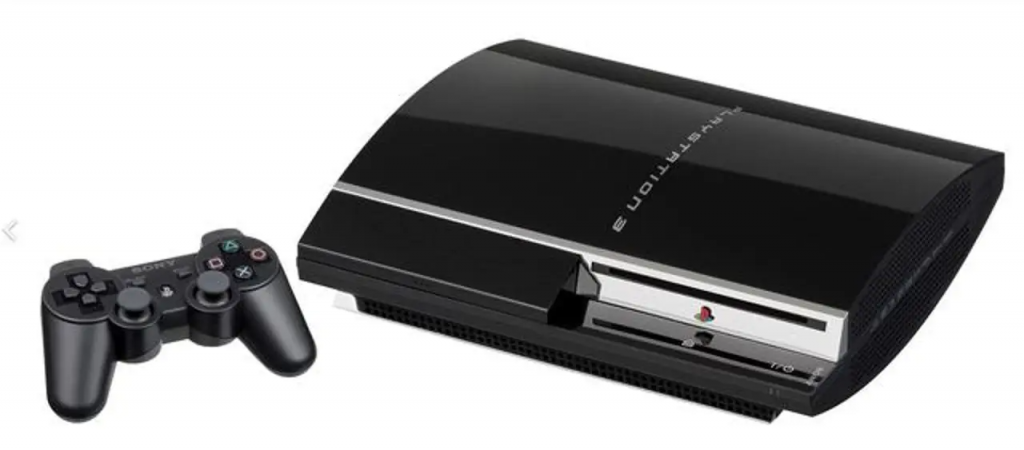
The PlayStation 3
Sony’s PlayStation 3 had a rough launch, owing to the fact that it released a year later and at a price point $100 higher than its chief competitor, the Xbox 360 (launched at $599.99), with a very threadbare lineup of games. The original PlayStation 3 was a large, ugly device and struggled to build a lineup of quality games, particularly as Microsoft was hammering away with exclusives early on. The console wouldn’t really hit its stride until late 2009 when the release of Uncharted 2: Among Thieves gave it the kind of amazing, generation-defining exclusive title it needed. The PlayStation 3 would eventually recover late in the generation, catching up to the Xbox 360 thanks to outselling the console in Japan – but Microsoft largely won the head-to-head battle in that regard, beating Sony soundly in the United States and UK.
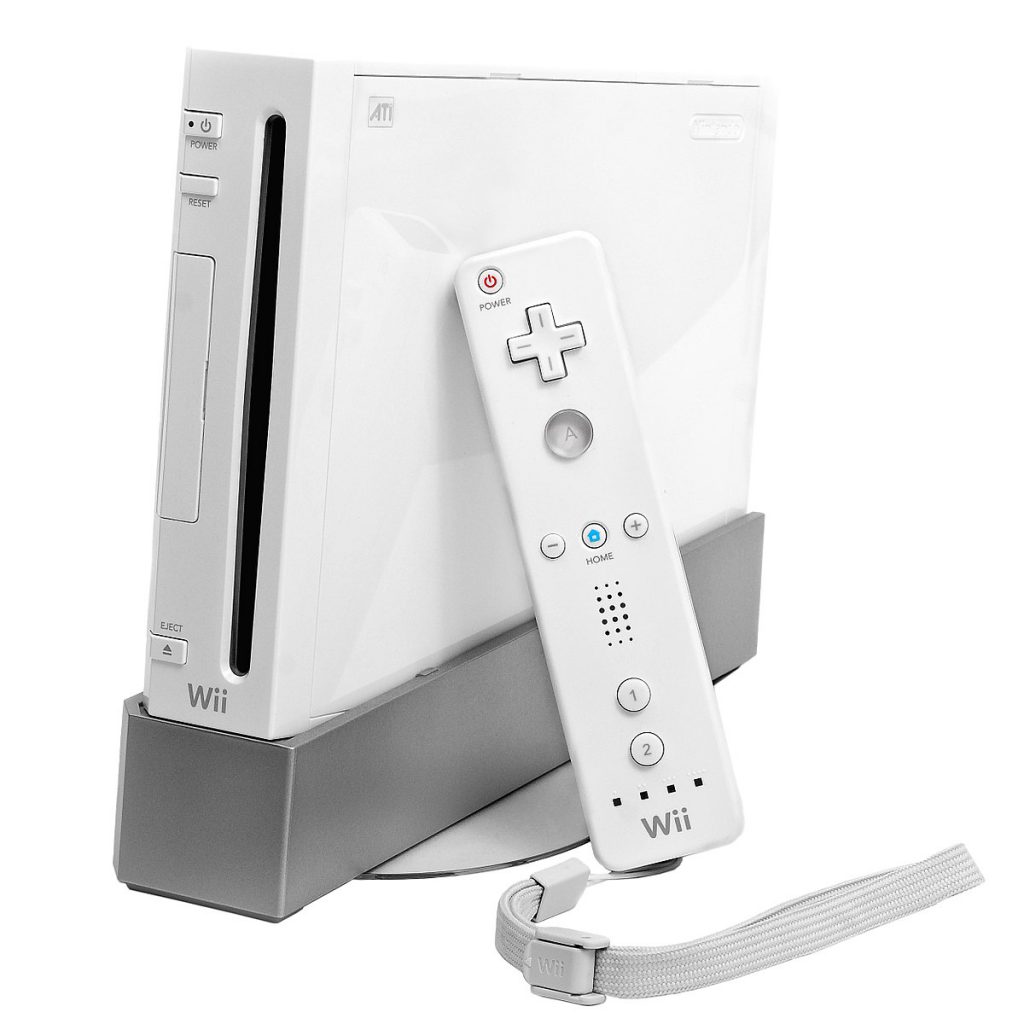
The Nintendo Wii
Although fondly remembered, the Gamecube was in many ways a commercial failure for Nintendo – it was outsold by Microsoft’s Xbox despite having the lowest price point of any console on the market and dropped Nintendo from 2nd place to 3rd place in the market. They needed a win – and with the Nintendo Wii they got one. The Wii was a completely different beast to the PS3 and Xbox 360, eschewing top-of-the-line graphics for an innovative controller – the Wii remote could track velocity and rotation, and an included bar allowed for tracking where it was pointed at the screen. The result was a console more focused on innovative motion control gaming, with titles like Wii Sports and Wii Play.
With the Nintendo Wii Nintendo focused on – and succeeded in – reaching an entirely new market, sidestepping the console wars by building an entirely new market of gamers. These new, more casual gamers weren’t interested in the latest first-person shooter or spiky-haired RPG protagonists but instead wanted to break out Wii Bowling at a party with friends. The Wii was a massive hit, and was by far the biggest-selling console of the seventh generation, selling nearly as many units as the Xbox 360 and PlayStation 3 combined. The console would put Nintendo back on top – but as we’ll see in a few years, it was a foundation made of sand.
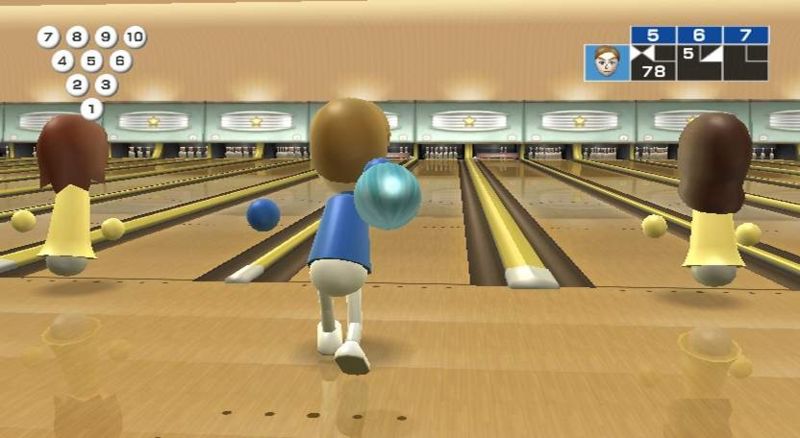
Wii Sports
TheChirurgeon: The pack-in title for the Nintendo Wii was Wii Sports, a simple sports game featuring five different games – boxing, golf, tennis, baseball, and bowling – all of which make prominent use of the console’s motion controls and wiimote. It’s a very simple game, but good enough to provide hours of family fun and the perfect kind of non-offensive arcade-style experience for when you want something that works as a party game but is still physically engaging. Because it was a pack-in with the most popular console of its generation, Wii Sports is also one of the most popular games of all time. I’m not sure it’d have been a massive bestseller if it weren’t a pack-in title, but it’s a really fun game on its own and one of the big reasons the system sold as well as it did to a casual audience.
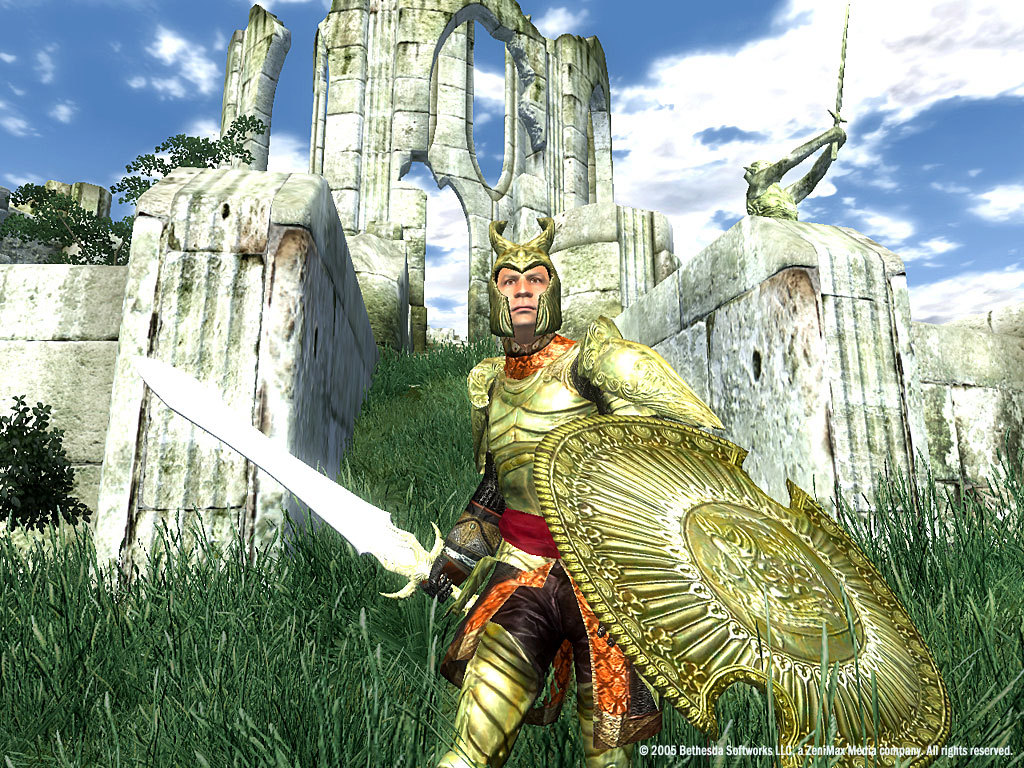
The Elder Scrolls IV: Oblivion
In 2006 The Elder Scrolls IV: Oblivion was released, the follow up to 2002’s surprise hit Morrowind. Oblivion sold very well and cemented Bethesda as a AAA developer to watch. Shortly after release it pioneered what is generally considered to be the first microtransaction in a major, western AAA console release with the Horse Armor DLC pack. This pack was widely ridiculed at time of release for charging money for what was generally seen as a very minor cosmetic change to the game. In hindsight, the release of the Horse Armor pack and the other minor house and quest packs for Oblivion, likely sowed the seeds for the more aggressive monetization that we see in modern AAA releases. This is one of the most significant long-term impacts of 2006 on the gaming industry, though it would take a few years before other companies got around to mimicking Bethesda.
In the long run Horse Armor would become the most significant part of Oblivion, overshadowing a perfectly fine RPG full of bloom, bad voice direction, and weird potato faces. The title itself is a very influential RPG, with its open world design and cozy generic fantasy feel gaining it a wide and passionate audience. Oblivion is one of the first RPGs that I remember playing, and it blew my idiot child mind at the time. In hindsight the game is a bit of a mess mechanically, with broken level scaling and frustratingly obtuse leveling mechanics, but to its credit these problems don’t affect casual or first time players to nearly the same degree they affect repeat playthroughs.
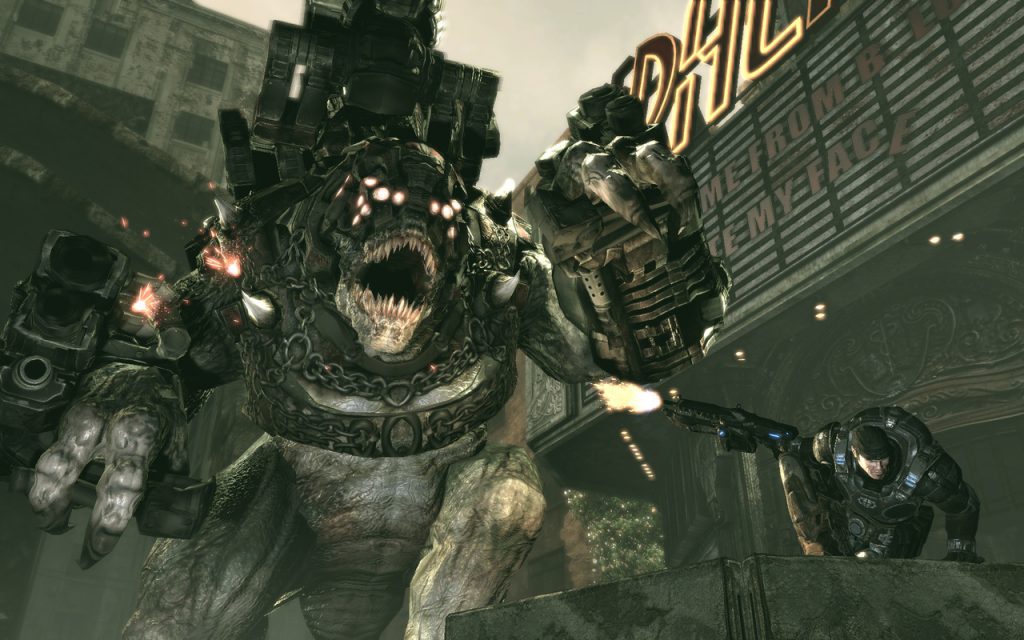
Gears of War
Perigrin: Gears of War was released in late 2006 and was incredibly successful, selling millions of copies before the end of the year. Its developer, Epic Games, was previously mostly known for the Unreal Tournament series of PC shooters, and Gears was a major breakthrough into console gaming after a few failed attempts with the Unreal Championship series. Gears of War was the first massively popular example of a cover shooter, a genre which would become infamous for over-saturation as the seventh console generation wore on with many developers aping Gears’ formula and gameplay style. Gears turned into a large franchise of games that have all sold very well, and ended up creating the Epic Games that we have today.
TheChirurgeon: The original Gears of War basically changed shooters overnight, suddenly making cover part of every game. The game was incredibly fun to play both in its campaign mode – co-op was a blast and the game’s story was well-told – and in multiplayer, where the game’s unique lancer chainsaw/gun became an iconic weapon for brutal kills. Nothing makes you empathize more with a horror villain than scaring the shit out of someone by revving your lancer and taking them out before they can react. It’s just an incredibly well made and designed game that does a ton of great little things which have become shooter staples.
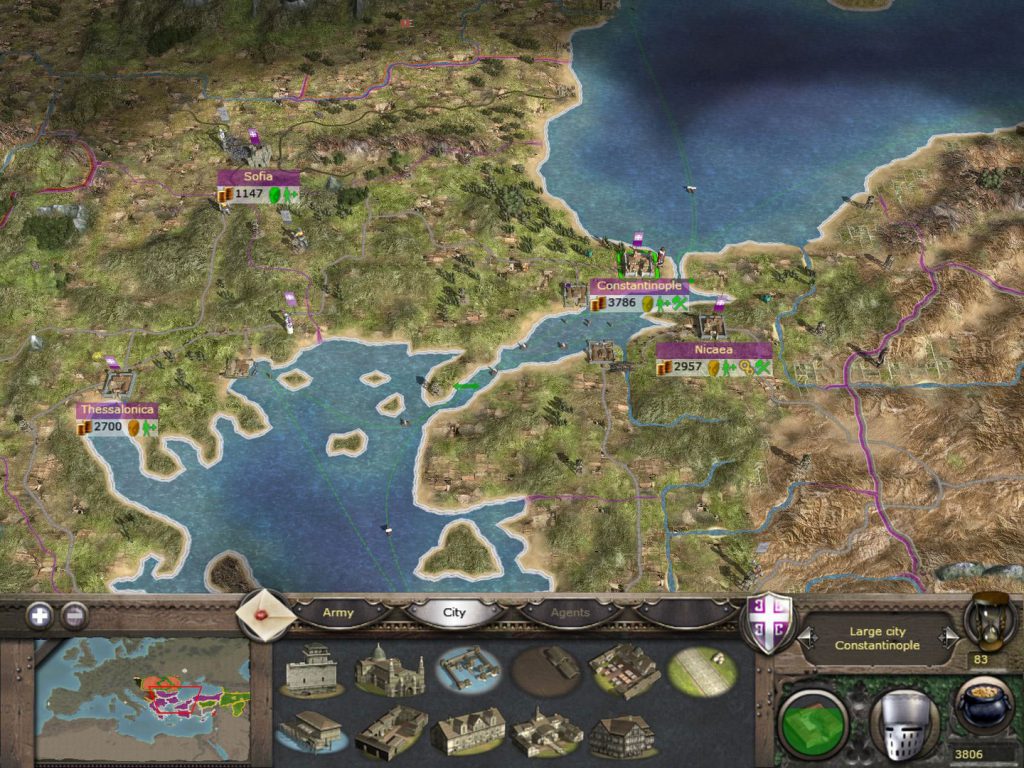
Medieval 2 Total War
Medieval 2 Total War released in 2006 and was a refinement on Creative Assembly’s previous game, Rome Total War. Medieval 2 is my personal favorite Total War game, and is a very expansive RTS with many factions, an in-depth campaign system, and surprisingly smart AI for a game of its age. Medieval 2 Total War also has a bright and vibrant modding scene to this day, with many franchises, such as Runescape, Zelda, and The Elder Scrolls having total conversion mods within Medieval 2’s framework.
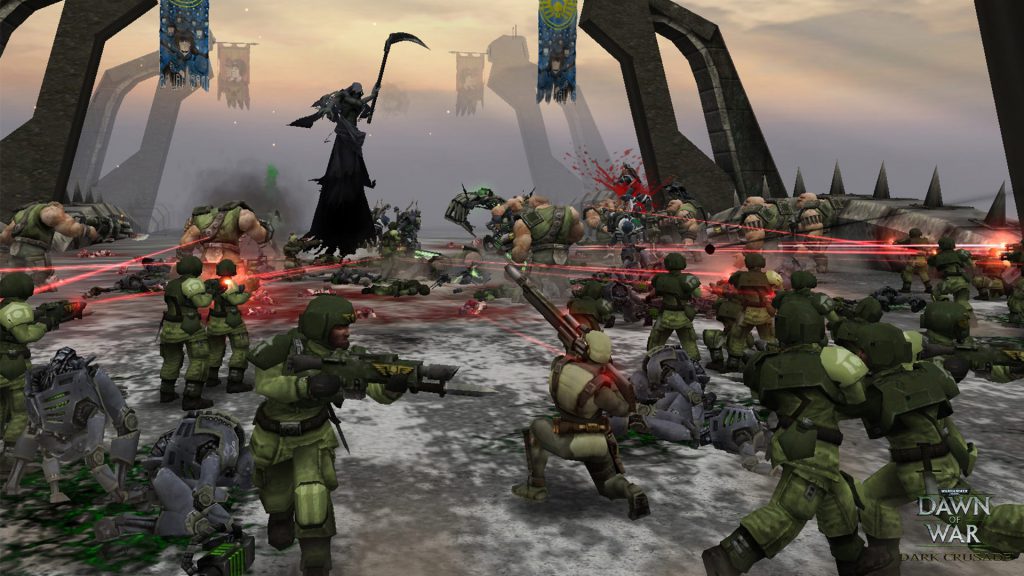
Dawn of War: Dark Crusade
Perigrin: Dawn of War received its second, and best, expansion in 2006. Dark Crusade added the Tau and Necrons to the game’s factions, and expanded the campaigns away from a traditional RTS series of missions and into a strategic map style of campaign that was surprisingly popular in 2006 RTS games, with Empire at War and Rise of Legends also having similar campaign systems. 2006 was a fairly slow year for 40k, with no major edition releases, but Dawn of War brought the franchise to a significantly wider audience. The effects of Dawn of War on the popularity of 40k cannot be overstated, with it being the first look that many people got at the franchise. Dark Crusade is the first piece of 40k media that I personally remember, and that is the same for a lot of people.
TheChirurgeon: The campaign mode in Dark Crusade is the high watermark to which all 40k games should aspire.
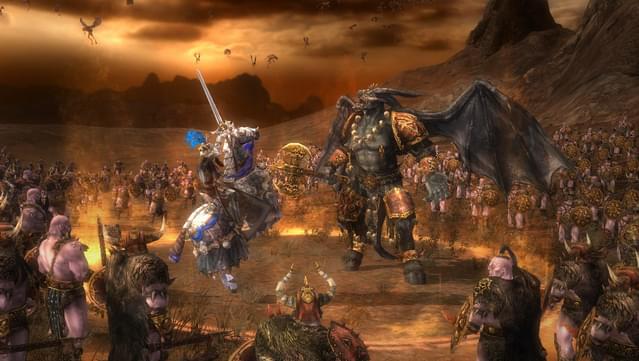
Warhammer: Mark of Chaos
Warhammer Fantasy actually also got an RTS in 2006, and it is a wild one to look back on. Mark of Chaos is a deeply strange game, with two campaigns full of ridiculous and hammy voice acting taking place just after the time frame of the new Warhammer prequel game The Old World. The opening cinematic/trailer for this game goes extremely hard, and the game in general completely nails the 2000s era look of Warhammer Fantasy, with a moody, dark look and tone that are just immaculate. Everything looks like the end of days and you get to see some of those classic 2000s era Chaos designs in motion and it rocks.
Mark of Chaos is, gameplay wise, a Total War clone, with hero units leading divisions of troops into battle in a semi-linear campaign. It is weird to revisit this game now that Total War Warhammer has been released. You can see flashes of that game in this one, feeling like a glimpse into another timeline where CA got the license much earlier. Mark of Chaos is janky mechanically and lacks the polish and smoothness of play that actual Total War games have, but the pure hammy vibes of its campaigns make it well worth playing if you are bored of replaying Total War Warhammer for the hundredth time.

Battle for Middle Earth II
Battle for Middle Earth II released in 2006 as a movie tie-in for the Lord of the Rings franchise, which was still massively popular at this time. The game is a very strong RTS game with a good campaign and an excellent expansion, The Lord of the Rings: Battle for Middle Earth II: Rise of the Witch King (holy shit that name is longer to type out than I realized), releasing later in the year.
The game is particularly interesting as it branches away from the events of the films and books and instead tells a side story in each campaign, with the Good campaign following an Elf fighting off evil in Murkwood, and the Evil campaign being an alternate timeline where Sauron gets the ring and burninates the whole continent. The expansion campaign is, in my opinion, the most interesting, following the Witch King’s conquest of Angmar and generally showing a bit of the setting that you rarely see. I am also a massive Witch King stan so seeing him get to do anything other than get killed is exciting to me. I have simple tastes, if a big otherworldly wraith in heavy armor with a spiked crown is killing things, I am paying attention.
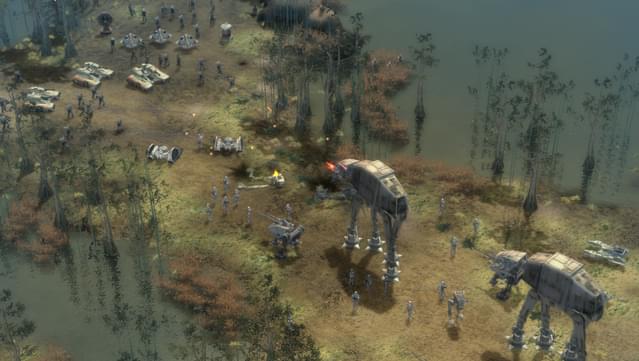
Star Wars: Empire at War
Empire at War is actually a very similar game to Battle for Middle Earth II. It is a strategy game spinoff of Star Wars with an expansion pack, Forces of Corruption, releasing later in the year. Empire at War had both linear campaigns as well as an open, risk-style campaign similar to Dark Crusade. The base game campaigns are roughly what you would expect, but like with Battle for Middle Earth II, the expansion is more interesting.
The expansion introduces the Zahn Consortium, a criminal syndicate that exists as a love letter to the old expanded universe of Star Wars, with surplus Droidekas, Star Vipers, Skipray Blastboats, and all sorts of other weird and obscure equipment from various books and RPG supplements. They are also massively overpowered compared to the base game factions, and have an interesting linear campaign that ends with a tease for a sequel that I am still mad we never got.

Company of Heroes
I could have sworn this game came out in 2007. Company of Heroes is a WW2 RTS game franchise by the same developers as Dawn of War. This is another of the all-time greats of the genre, with good controls, excellent skirmish games, decent AI, impressive visuals for the time and a generally sky high level of polish compared to other RTS games that came out in 2006. Battles look awesome in Company of Heroes and the game controls extremely well, with the design of maps and game modes creating small hotspots of conflict and opportunities to flank and do all sorts of cool RTS shenanigans.
The historical setting of the game is also interesting. The early 2000s were full of WW2 games, infamously so, with dozens of Nazi annihilation simulators coming and going over the first half of the decade and fatiguing people away from the genre in a huge way. Call of Duty would make a change to a more modern setting with Call of Duty 4: Modern Warfare in a couple of years, and 2006 was one of the last years where you got a significant amount of new WW2 games for a while. There would always be WW2 games, but as a AAA setting there was a marked decline for the next decade or so after 2006.
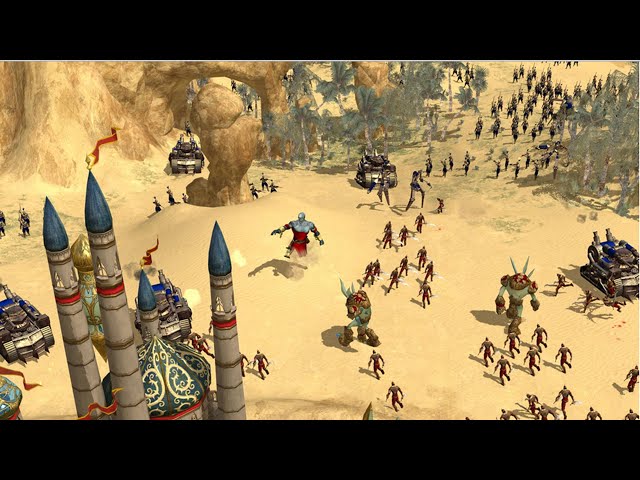
Rise of Legends
Rise of Nations would get a spin off in 2006 with Rise of Legends, a deeply unconventional RTS with a focus on capturing cities and Warcraft III-style neutral camps pre-placed on the map. Warcraft III is an apt comparison, as both games have similar campaigns where you play through a long storyline as a series of factions. Both games also feature powerful hero units with several abilities, but Rise of Legends is missing the item system that would go on to accidentally create MOBAs.
Rise of Legends is a game I love to pieces but it undersold by quite a distance and ended up being the last major RTS developed by Big Huge Games, who would go on to develop Kingdoms of Amalur and immediately go out of business after that whole debacle.
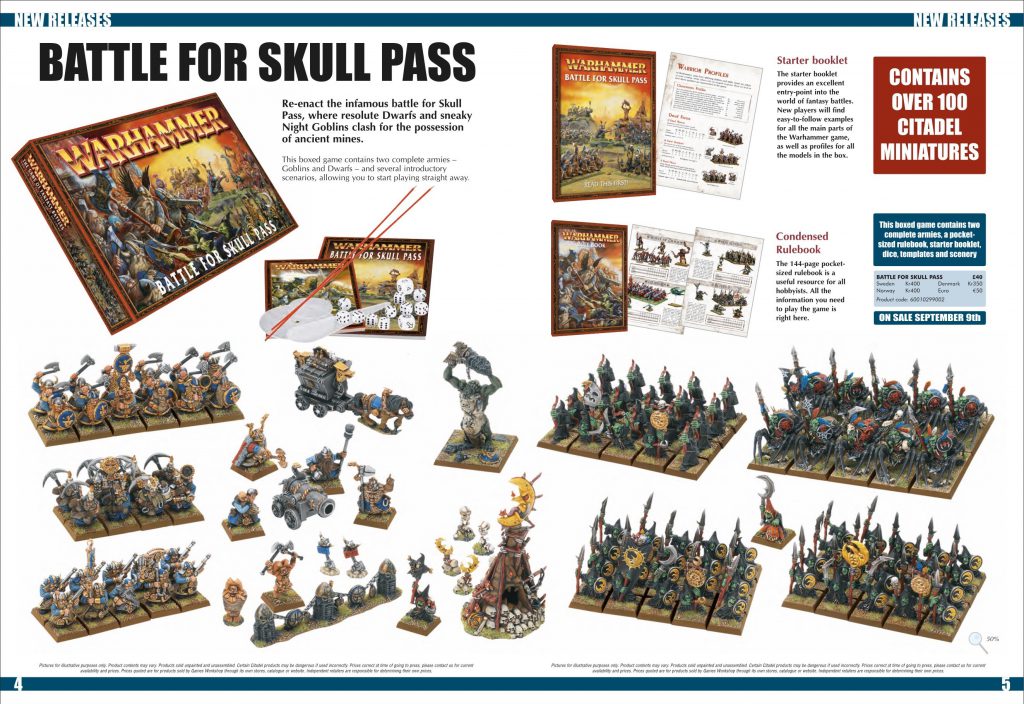
Warhammer Fantasy Battles Seventh Edition
Warhammer Fantasy Battles seventh edition would be released in 2006, which was a fairly slow year for tabletop gaming, with no major releases for D&D or 40k. Seventh edition is generally considered the beginning of the end for Warhammer Fantasy Battles, with the edition mostly remembered for incredibly broken army books and a major decline in the player base. Eighth edition would finally kill Warhammer Fantasy Battles, but the reason for its death was likely seventh edition and its tumultuous lifespan.
The true death knell for seventh edition, the Daemon Army Book, wouldn’t arrive until sometime in 2008. It is hard to overstate how much the army books ruined this edition; seventh edition’s core rules are a slight refinement on sixth, with a relatively small number of changes between editions. When played with sixth edition army books, as it would have been on release, the game works perfectly fine, but GW would choke the life out of this game little by little with each army book released.
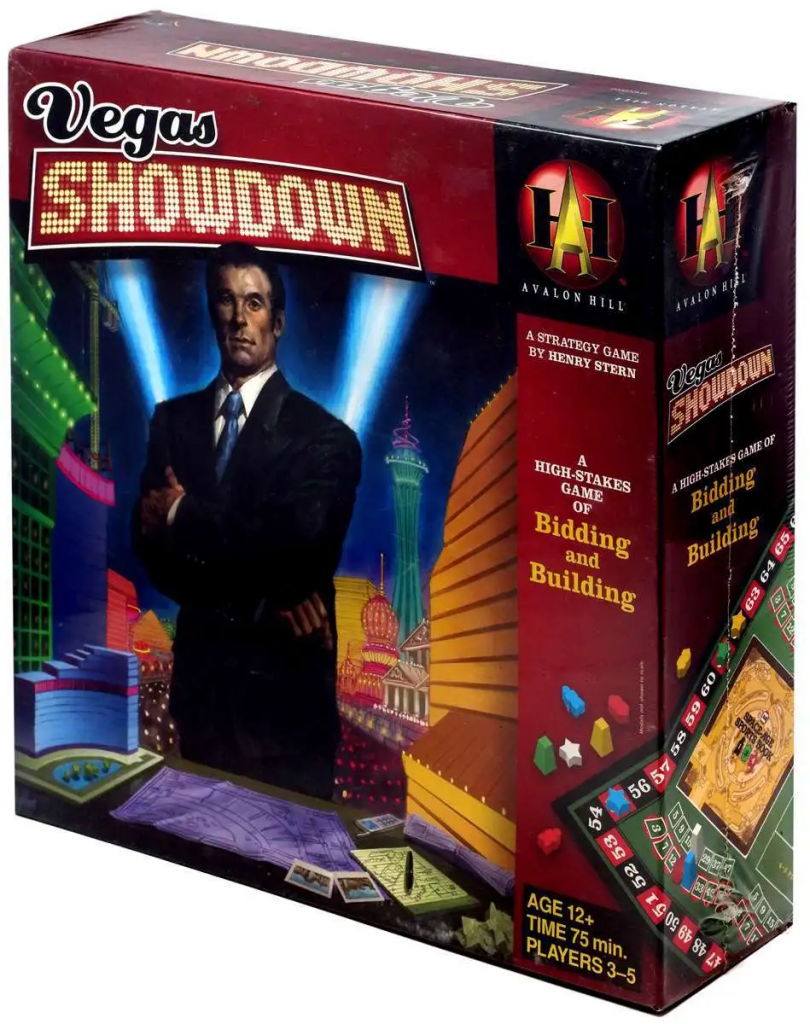
Vegas Showdown
TheChirurgeon: Vegas Showdown has players take on the role of casino owners building their own casinos one room at a time, bidding on new facilities and turning the revenue from those into more rooms in their growing empires. It’s a fun game that’s easy to learn and breezy to play, and perfect for parties where you want a change of pace from Catan without immediately alienating more casual players who aren’t big board game people.

The Legend of Zelda: Twilight Princess
The Legend of Zelda: Twilight Princess would release in 2006, and was a pretty good Zelda game. It is the first one I remember playing personally, and dual launched on the Gamecube and Wii. The game released to incredibly high review scores and massive critical acclaim, and is often looked back on as one of the best Zelda games ever made, if not the best. It made great use of the Wii’s motion control gimmick compared to a lot of other games, and the wolf transformation sequences were another neat gimmick, adding a second layer to the game and breaking up the pacing so that the player never gets tired of either mode of play.
Other than the gimmicks, Twilight Princess wasn’t a groundbreaking change from earlier Zelda games, it was just an excellent execution of the core of the series polished to a mirror sheen. There are very few issues with the game and it is probably the best of the classic, pre-open world Zelda games.

Final Fantasy XII
TheChirurgeon: The PlayStation 2 was one of the most popular consoles of all time and games continued to release for it well into the following console generation. One of the biggest late-cycle games was Final Fantasy XII. Set loosely in the same world as Final Fantasy Tactics, FFXII tells another broad, sweeping sci-fi fantasy epic about evil empires and crystals, albeit with a bit more focus on its world’s politics than other games in the series. FFXII is notable for its gambit-based combat system, which allows you to program your NPC party members’ actions making the game’s more MMO-style combat work better than you’d think. It’s an underrated outing for the series with some great battle mechanics and solid voice acting.
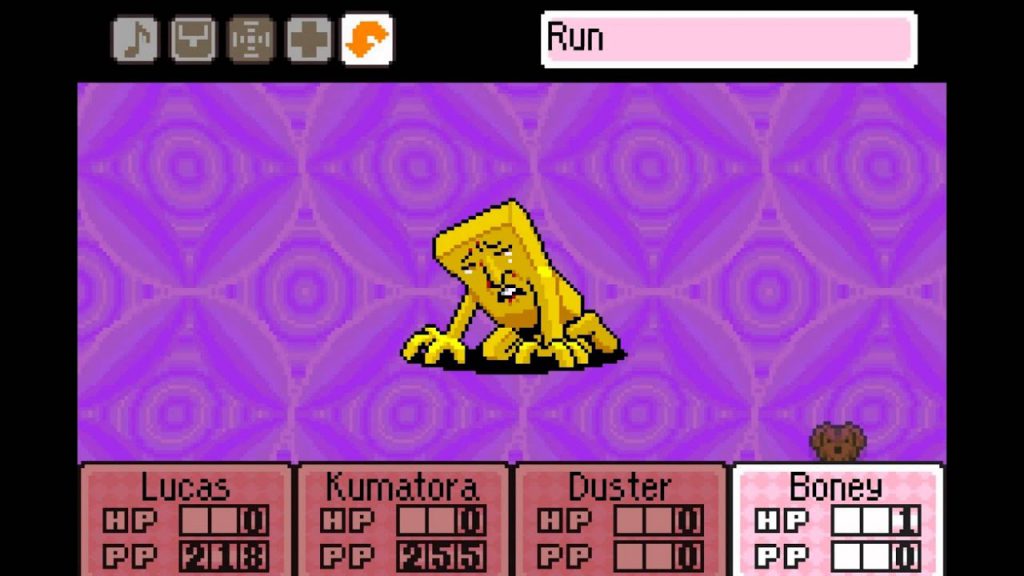
Mother 3
TheChirurgeon: One of the biggest travesties of modern gaming is that we never got a US release of Mother 3 for the Gameboy Advance. It’s a wonderful, affecting game, full of the same amazing humor and heartfelt emotion of Earthbound, but with improved graphics, mechanics, and music. It’s an amazing game and worth finding a copy with Tomato’s translation if you can get it. The ending is so good that when I originally beat the game it legitimately made me sad I was leaving the world and its characters behind.
Why It Was the Best Year in Gaming
I would argue that 2006 is an incredibly significant year in gaming. While years like 1999 and 2004 have a lot of games going for them, and certainly have more going on in the tabletop space, 2006 ended up mattering in a huge way to video gaming going forwards. The seventh generation of consoles finished rolling out this year, which is probably the generation with the most significant impact on the way we play games today. The seventh generation saw the rise of online game sales, the oversaturation and death of RTS games, and a general change in the way games were sold and structured.
Many releases from this year had ripple effects that are still being felt today. Cover shooters ended up dominating AAA shooter releases for years, and Gears of War familiarized Epic Games with coop third person shooters, and I would argue this sets the stage for Fortnite years later, starting life as a coop third person shooter and morphing into the franchise soup we have today. Horse Armor got crucified and mocked heavily at release, but people still bought it, and this taught companies that they could get away with minor 2-5 dollar purchases in their AAA games. Oblivion also popularized the open world in RPG gaming, as it sold very well and was widely played, and arguably began the slow transformation of every AAA game into some form of open world RPG.
2006 was also the pinnacle of RTS gaming, with an incredibly high density of quality releases. The only mark against 2006 when it comes to RTS games is the fact that Supreme Commander came out in 2007. I could have sworn it was 2006, but as Supreme Commander and its expansion pack are the best RTS games ever made with no contest, 2006 has to time share the title of best year for RTS gaming with 1999 and 2007. The genre’s luck would turn from 2008-2010 with a series of low quality games chasing after Esports and taking the wrong lessons away from the massively popular MOBA genre, which would see its first major commercial releases in 2009 and 2010. As a massive RTS fan, the combination of the good console release and RPGs with an amazingly strong showing of RTS games makes 2006 overall a very strong year for all of video games.
Even if 2006 is not the overall best year in gaming, I would argue it is the most impactful and significant to the modern gaming landscape we have today. Horse Armor is, in my opinion, the actual most significant video game release of the year, and I hate writing that so much. The pure greed of modern microtransactions is rooted in an innocuous and widely mocked set of ugly ass armor for your 2006 gaming horse.
This article is part of a larger series on the best year in gaming. For more years, click this link. Have any questions or feedback? Drop us a note in the comments below or email us at contact@goonhammer.com.
